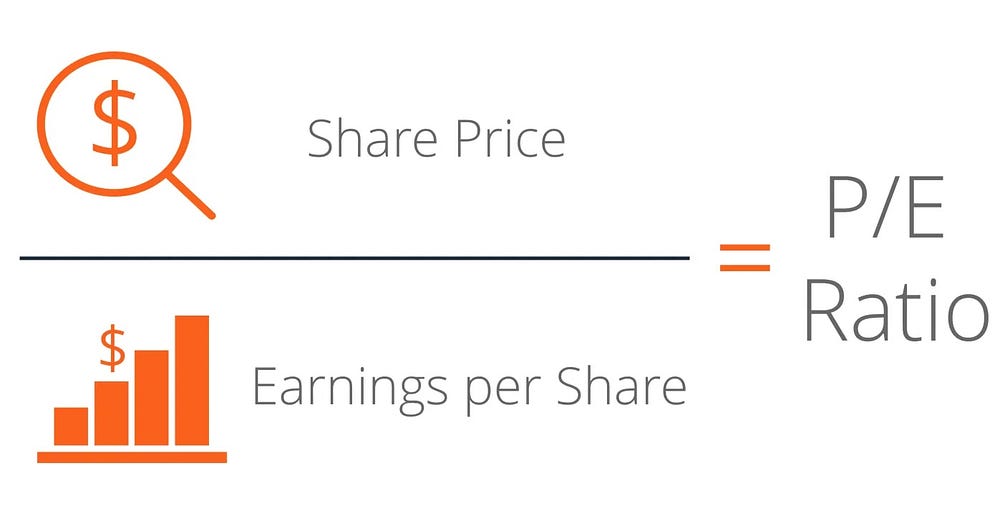Why most investors Don't rely on P/E ratios
If you’ve ever read a financial article, you’ve probably seen a P/E ratio mentioned. A P/E ratio is a metric a lot of investors use to quickly figure out if a company is expensive or cheap. While using a P/E ratio to quickly look at a stock is a good tool there’s a lot of reasons why you shouldn’t rely on it for valuing a company.
What is a P/E Ratio?

A P/E ratio stands for price-to-earnings. It compares a companies stock price to their earnings per share. You can calculate a companies P/E by dividing the stock price by the companies annual earnings per share. For example if a company is trading at $10 a share and has $1 of EPS it’s trading at a P/E ratio of 10.

A P/E ratio can be Manipulated
A P/E ratio can be manipulated a couple of different ways. One of those ways can be “creative” accounting. Some companies can shift depreciation policies or by adding a non-recurring gain to the bottom line. While “creative accounting” is legal many times it can lead to accounting fraud which is illegal. Many companies use creative accounting to make their earnings look better.
P/E ratios Don’t take Debt into Account
Since a P/E ratio is very basic it doesn’t take into account a multitude of factors including debt or cash.
Imagine company A has a P/E ratio of 10 while company B has a P/E ratio of 20.
At first glance company A is a much better deal. But what you don’t see in the P/E is that company A has $10 million dollars of debts and $0 cash while company B has $0 debt and $5 million dollars in cash. You would never have seen the debt or cash of a company by looking at a P/E ratio.
This is why you shouldn’t rely on a P/E ratio when looking at a company. You should look into a companies balance sheet, cash flow statement, and their income statement to value a company.
A P/E can look Worse than it really is
On the flip side sometimes P/E ratios can make a company look more expensive than it really is. Companies that are heavily reinvesting into the company may have much higher P/E ratios because they’re using their earnings to grow the business. If these companies stop reinvesting in their profits their P/E will go down dramatically.
Another way is by cyclical companies. Some cyclical companies’ profits may vary highly from year to year. Just because their earnings this year may look bad (in turn making the companies’ P/E incredibly high), it doesn’t mean it’s an expensive stock. Then when the cycle reaches a peak, the P/E will look extremely cheap.
So just because a stock has a low or high P/E doesn’t mean it’s expensive or cheap. There are tons of other factors when valuing a company some of my favorite personal ratios are : EV/EBIT
EV/FCF P/FCF.
I always highly recommend to read a companies 10K and reading their financials before investing in a company.

Comments
Post a Comment